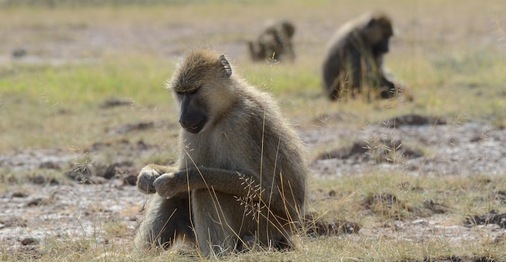So what happens if I continue on in research? How does that work? Listening to the weekly seminars given by Duke faculty has given me a better understanding of how the career of a scientist pans out. Through the seminars, I’ve also realized that there is no single set in stone path to becoming a researcher. Several of the faculty who spoke to us confessed to originally wanting to become doctors (because who doesn’t want to become a doctor, right?). Several others said that research just found them in a serendipitous moment of new discovery. But no one said that he or she just simply knew from day one that he or she wanted to go into research. I guess the point is that no one knows for certain whether or not he or she is cut out for a life of research. All you can say for certain is that you are passionate about what you are studying. The biggest take-home message: be passionate about your research.
Susan Alberts’ faculty seminar, in particular, stood out to me. Dr. Alberts works in the Duke Department of Biology studying the social behaviors of Amboseli Baboons in Kenya. For part of the year, every year, Dr. Alberts settles down in a tented camp at the base of Mt. Kilimanjaro in Kenya to monitor the social interactions of the population of Amboseli Baboons that live there.
Dr. Alberts described three key areas of interest concerning the baboons’ social interactions: social relationships, social status, and parental care. These three research interests, taken together, help to define how each individual baboon survives within the larger context of the family or group unit. Dr. Alberts seeks to answer several questions. How does social isolation put female baboons at greater risk for death? How does social rank affect the nutrition and relationships of females? Do male baboons invest preferentially in their own offspring? These questions are compelling on their own, but they also seem to have echoing implications for studies into human behaviors and social interactions as well. For example, the fact that social isolation puts baboons at greater risk of death than socially integrated baboons seems to also be true for humans as well, see here and here.
In addition to describing her research interests and discoveries, Dr. Alberts also gave us some insight into what her life was like living in a tent at the base of Mt. Kilimanjaro without the luxury of modern day conveniences. I enjoyed this aspect of the talk as much as I enjoyed learning about her work. Research isn’t just a job, its a lifestyle. This is the major lesson I gleaned from Dr. Alberts’ talk. A life as a researcher is an all-encompassing one, but it is also a truly enjoyable one when you are pursuing a question or idea that you are truly passionate about. Dr. Alberts’ work is the perfect example of how pure passion and dogged interest can generate fruitful and compelling scientific results.

